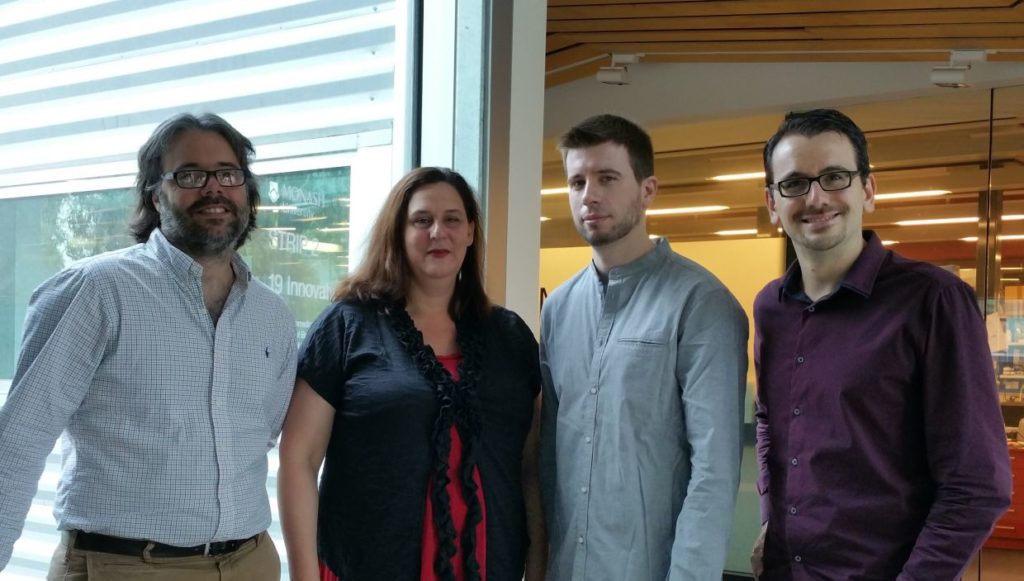Mining for intestinal stem cells

(Image from left to right: Jose Polo (Co-corresponding), Helen Abud (Co-corresponding), Christian Nefzger (Co-First), Thierry Jarde (Co-First))
Like most organs, our gut is made out of many different cell types. In a normal state, these cells work together to enable normal gut function. However, the gut can be subjected to a variety of diseases that can damage our intestine and its function. Researchers are looking at the intestinal stem cells (ISCs) of our gut to understand if we can direct these cells to more efficiently regenerate the gut from a diseased state. However, to accurately study the function of intestinal stem cells in both health and disease, ISCs need to be isolated at high purity by separating them from all the other cell types of the gut. This form of study is currently limited to very specific genetically engineered mouse strains where the ISCs are marked by the presence of fluorescent markers such as the green fluorescent protein (GFP).
Jose Polo (an ARMI group leader) and his colleagues therefore introduced a strategy to isolate ISCs from a broad range of mouse strains without the need to rely on specific genetically modified animals. Importantly, they uncovered that only ISCs isolated from normal or wild type mice that do not carry a specific fluorescent reporter are molecularly and functionally normal.
‘There are numerous mouse strains/disease models from which currently ISCs cannot be isolated because they do not carry the required genetic modification. Our strategy will allow the scientific community to purify and study ISCs directly. Importantly, it will allow the isolation of physiologically normal ISCs that are not compromised by the presence of genetic reporters’ said Christian Nefzger, one of the lead scientist.
Their approach? Jose and colleagues used a combination of six key antibodies to isolate pure ISCs at yields comparable to use of the gold standard mouse strains carrying a genetic reporter.
‘We are now using the strategy on mouse strains that were previously inaccessible to ISC isolation due to the restricted use of genetic reporter lines and will use these cells for molecular and functional studies to further our understanding of their function in health and disease. Currently, this strategy can only be employed on mouse. However, we are in the process of adapting the strategy to be used on human samples’ said Christian.
Their paper is titled ‘A versatile strategy for isolating a highly enriched population of intestinal stem cells’ and was published in Stem Cell Reports on the 28th of February 2016.
